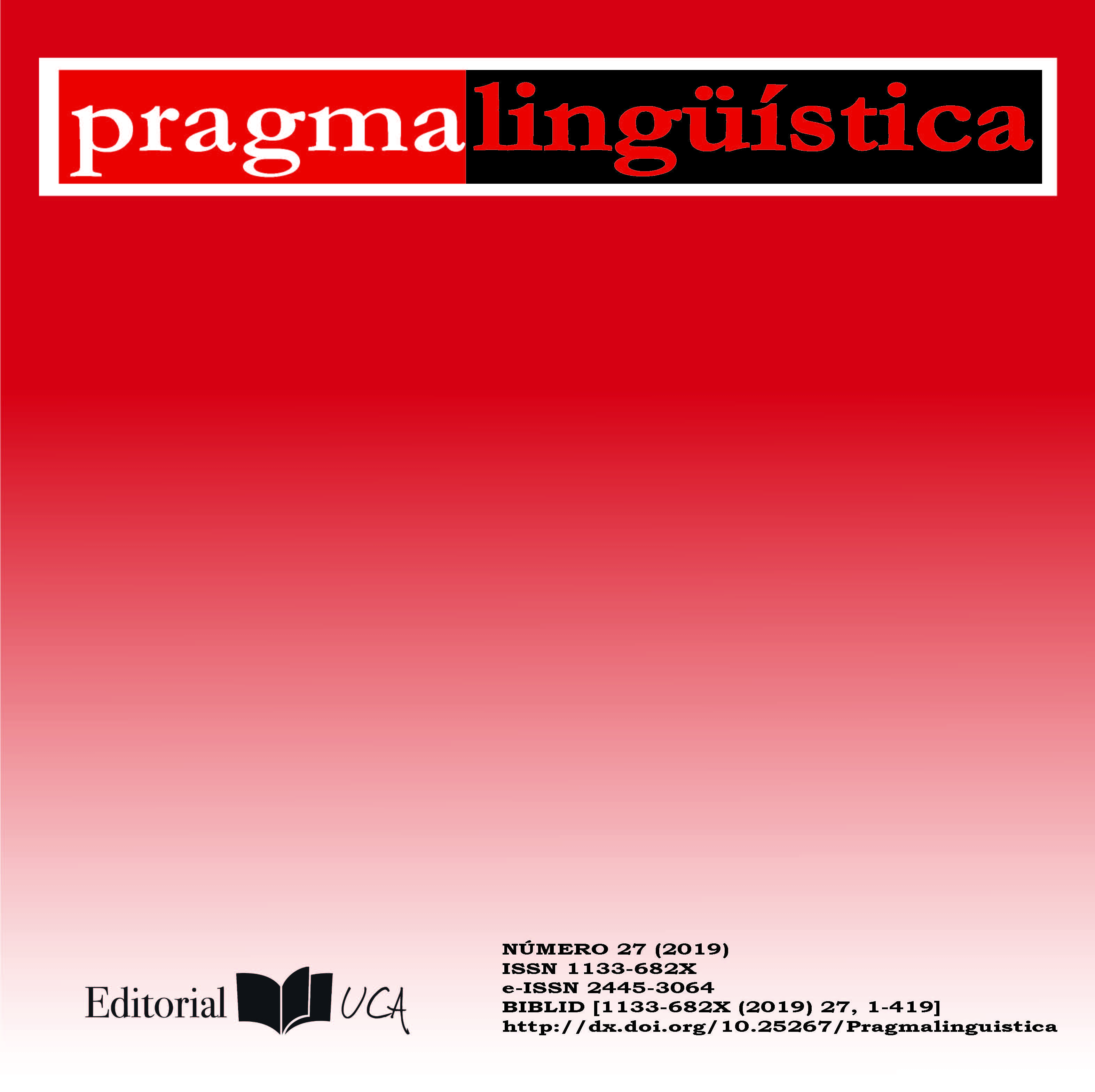L'importance de la pragmatique dans la traduction de textes sur les nouvelles identités de genre

DOI
https://doi.org/10.25267/Pragmalinguistica.2019.i27.09Info
Résumé
L’objectif de cette étude est d’analyser les difficultés liées à la traduction de l’anglais vers l’espagnol d’un texte sur l’opération de réattribution sexuelle en raison de la complexité que certains aspects du genre, ainsi que la terminologie et la phraséologie, impliquent pour la constitution d’une nouvelle identité. Pour l'analyse, une méthodologie qualitative construite à partir des solutions apportées par les étudiants de la troisième année du cours de traduction scientifique et technique des études en Langues Modernes et Traduction de l'Université d'Alcalá. Les résultats montrent que, même si les étudiants sont particulièrement sensibilisés à la recherche de solutions de traduction dans ce type de textes, il convient de donner plus d’importance à la formation en traduction selon une approche pragmatique. Cela les aidera à prendre conscience du potentiel de leur travail en matière de construction et de diffusion des connaissances grâce au texte traduit.
Mots-clés
Téléchargements
Comment citer
Licence

Ce travail est disponible sous licence Creative Commons Attribution - Pas d'Utilisation Commerciale - Pas de Modification 4.0 International.
Références
ATIENZA, J. (2017): Los 8 términos que te ayudarán a entender las distintas identidades de género. https://www.lavanguardia.com/vivo/lgtb/20170701/423783279046/diccionarioidentidades-de-genero.html (Fecha de consulta 7/12/2018).
AUSTIN, J. L. (1962): How To Do Things With Words. Oxford: Clarendon Press. BASSNETT, S. (2017): “Foreword” en Gentzler, E. Translation in the Age of Post-Translation Studies. London / New York: Routledge, pp. viii-x.
BROWN, P. & LEVINSON, S. (1987): Politeness: Some Universals in Language Usage. Cambridge: Cambridge University Press.
COOREN, F. (2008): Between Semiotics and Pragmatics: Opening Language Studies to Textual Agency. Journal of Pragmatics, 40, 1-16.
CORBACHO SÁNCHEZ, A. (2005): “Los conceptos de Tour(ismus) y Reise en los fraseologismos alemanes y su traducción al español”. Pragmalingüística, 13. 6575.
CORPAS PASTOR, G. (ed.) (2000): Las lenguas de Europa: estudios de pragmalingüística 27 (2019) 175-190 189 fraseología, fraseografía y traducción. Granada: Comares. CORPAS PASTOR, G. (1997): Manual de fraseología española. Madrid: Gredos.
CRONIN, M. (2006): Translation and Identity. London / New York: Routledge. DICERTO, S. (2018): Multimodal Pragmatics and Translation: A New Model for Source Text Analysis. Cham: Palgrave Macmillan.
FAWCETT, P. (1998): “Presupposition and Translation” en Hickey, L. (ed.) The Pragmatics of Translation. Clevedon: Multilingual Matters, pp. 114-123.
GARCÉS GARCÍA, P. & FILARDO LLAMAS, L. (2004): “Do Lords think in male?: Gender and Language in Parliamentary Speech”. Pragmalingüística, 12. 45-54.
GENTZLER, E. (2012): Translation without Borders. Translation: A Transdisciplinary Journal. Available at http: //translation.fusp.it/articles/translation-without-borders.
GENTZLER, E. (2017): Translation in the Age of Post-Translation Studies. London / New York: Routledge.
GESKE, A. & GRINFELDS, A. (2006): Education research. Riga: LU.
GRICE, H. P. (1975): ‘Logic and conversation’, en Cole, P. y Morgan, J. L. (eds.) Syntax and Semantics, vol. 3: Speech Acts, New York: Academic Press, pp. 4158.
GUTT, E. A. (1998): “Pragmatic Aspects of Translation: Some Relevance-Theory Observations” en Hickey, L. (ed.) The Pragmatics of Translation. Clevedon: Multilingual Matters, pp. 4153.
HICKEY, L. (1998): “Introduction” en Hickey, L. (ed.) The Pragmatics of Translation. Clevedon: Multilingual Matters, pp. 1-9.
LEFEVERE, A. & BASSNETT, S. (1990): “Proust’s Grandmother and the Thousand and One Nights” en Bassnett, S. y Lefevere, A. (eds.) Translation, History and Culture. London: Printer Publishers, pp. 1-13.
NATIONAL GEOGRAPHIC (2018): Glosario del Género. https://www.ngenespanol.com /el-mundo/identidad-sexualy-de-genero-definicion-de-identidad-de-genero/
NERGAARD, S. & ARDUINI, S. (2011): “Translation: A New Paradigm”. Translation: A Transdisciplinary Journal 1, 8-17.
ROSKOSA, A. & RUPNIECE, D. (2016): Advantages and drawbacks of using group work in translator training. Procedia. Social and Behavioral Sciences, Nº231, pp. 244-250. Disponible en: https://www.sciencedirect.com/science/article/pii/S1877042816312095 (Fecha de consulta: 31/3/18).
SAVENYE, W. C. & ROBINSON, R. S. (2005): Using qualitative research methods in higher education. Journal of Computing in Higher Education, 16(2), 65-95.
SPERBER, D. & WILSON, D. (1986): Relevance: Communication and Cognition. Oxford: Blackwell.
STEINMETZ, K. (2017): Beyond ‘He’ or ‘She’: The Changing Meaning of Gender and Sexuality. Time. http://time.com/magazine/us/4703292/march27th-2017-vol-189-no-11-u-s/
STEINMETZ, K. (2014): This is What ‘Cisgender’ means. Time. http://time.com/3636430/cisgender-definition/
SVENSSON, L. & DOUMAS, K. (2013): Contextual and analytic qualities of research methods exemplified in research on teaching. Qualitative Inquiry. 19. 441-450






